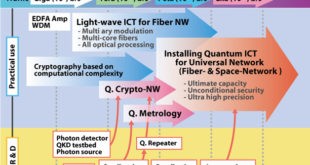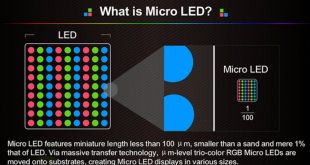Pilots rely more on vision than on any other sense to orient themselves in flight. The visual sense is especially important in collision
avoidance and depth perception. A pilot’s vision sensors are the eyes generally are most accurate and reliable sense, even though they are not perfect in the way they function. Due to the structure of the human eye, illusions and blindspots occur.
The visual cues can be misleading, contributing to incidents occurring within the flight environment. Confusion with ground lights occurs when a pilot mistakes ground lights for stars. The pilot can place the helicopter in an extremely dangerous flight attitude if he or she aligns it with the wrong lights. Relative motion is the falsely perceived self-motion in relation to the motion of another object. During daylight, objects can be perceived at a great distance with good detail. At night, range is limited and detail is poor. Objects along the flight path can be more readily identified at night when pilots use the proper techniques to scan the terrain. To scan effectively, pilots look from right to left or left to right. An absence of ground features, as when landing over water, darkened areas, and terrain made featureless by snow, can create the illusion that the aircraft is at a higher altitude than it actually is. The pilot who does not recognize this illusion will fly a lower approach.
The best-known limitation of night vision is the “central blind spot.” In a mostly dark area with low illumination on the periphery, a “blind spot” about 5-10” will appear at the center of your vision. This means that viewing distant or faint objects directly at night will result in them being invisible or even fading the longer you look at them. The solution? A regular scan and liberal use of peripheral vision. Your peripheral vision is stronger than your central vision at night–the exact opposite of your vision during the day. You’ll need to use peripheral vision to keep dim objects in view, and make note of objects as you see them so you remain aware of them if they seem to disappear. Be aware, too, that it takes about 30-45 minutes in dim light to maximize your night vision, so use special care at the beginning of flight and keep cockpit lighting low and consistent.
You may also experience certain visual illusions when flying at night. As with other spatial disorientation factors, anticipating these illusions and understanding their true nature can help you identify and see through them. Some examples include:
- Distant city lights or reflections over water may look like or blend into the stars, or vice versa, giving you the impression that the aircraft nose is higher or lower than actual.
- A black hole illusion can occur on approach to a lit runway with no other lights in the surrounding area, giving the impression of a “black hole” between the aircraft and the runway itself. This can result in an unsafe or overestimated glide path.
- By focusing on a fixed point of light in the distance, such as a star or a ground light, a pilot may experience the illusion that another aircraft is moving toward or in front of the aircraft.
In all of these cases, awareness that illusions may happen and trusting your instruments will help mitigate the associated risks. Obstructions having poor reflective surfaces, such as wires and small tree limbs, are difficult to detect. The best way to locate wires is by looking for the support structures. The following visual factors contribute to flying performance: good depth perception for safe landings, good visual acuity to identify terrain features and obstacles in the flightpath, and good color vision.
A night-vision device (NVD), also known as night optical/observation device (NOD) and night-vision goggles (NVG), is an optoelectronic device that allows images to be produced in levels of light approaching total darkness. There are two classes of Night vision, Night Vision Goggles (NVGs) that take in small amounts of visible and near infrared light reflected from the targets, magnify it using high-resolution image intensifier tubes, and project that on a display. Thermal IR cameras detect tiny differences in Heat (also called infrared, or thermal, energy) – as small as 0.01°C – and display them as shades of grey in black and white TV video but usually with relatively low resolution. The image produced is typically monochrome, e.g. shades of green.
NVDs are most often used by the military and law enforcement agencies, but are available to civilian users. The term usually refers to a complete unit, including an image intensifier tube, a protective and generally water-resistant housing, and some type of mounting system. Many NVDs also include optical components such as a sacrificial lens, or telescopic lenses or mirrors. An NVD may have an IR illuminator, making it an active as opposed to passive night-vision device.
Night vision devices are becoming essential equipment for night driving, night flying and night surveillance, wildlife observation and search and rescue missions. According to Industry ARC’s report on Night vision devices, the market is estimated to grow to $20.5 billion in 2020 at a CAGR of 7%.
Collins Aerospace helps U.S. Navy and Marine Corps pilots fly more safely in low-light conditions with new Enhanced Visual Acuity system
Collins Aerospace Systems, a unit of Raytheon Technologies Corp. (NYSE: RTX), is helping the U.S. Navy and Marine Corps transition from analog to digital night vision systems with their new Enhanced Visual Acuity (EVA) system. The system, recently selected for use by rotary-wing and tiltrotor aircrews, is the first to provide advanced digital night vision and display technology that increases flight safety and mission effectiveness for the warfighter.
Currently in development, EVA is a digital day/night vision solution that will integrate a helmet-mounted binocular display to provide wider, higher-resolution imagery and improved night vision performance at Very-Low-Light-Levels (VLLL) – when the rotary-wing pilot needs it the most. In addition, the unique design will minimize head-borne weight to reduce pilot fatigue while increasing comfort and safety.
Digital night vision is a big step forward in providing enhanced situational awareness to the warfighter, and is a foundation we’ll continually build on to ensure mission success,” said Dave Schreck, vice president and general manager for Military Avionics and Helicopters at Collins Aerospace. “Collins Aerospace is proud to deliver the capability provided by EVA as it will be a significant force multiplier for rotary-wing and tiltrotor aircrews.” Work on the new developmental contract is taking place at Collins Aerospace facilities in Iowa, California and Massachusetts and will be completed by March 2023.
References and Resources also include:
 International Defense Security & Technology Your trusted Source for News, Research and Analysis
International Defense Security & Technology Your trusted Source for News, Research and Analysis

